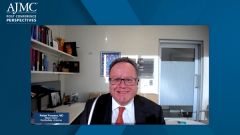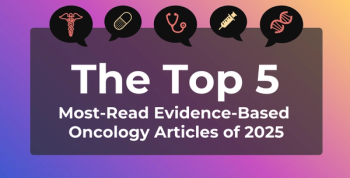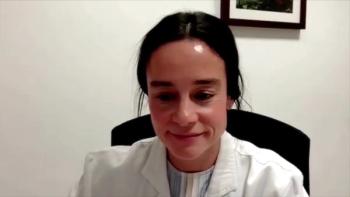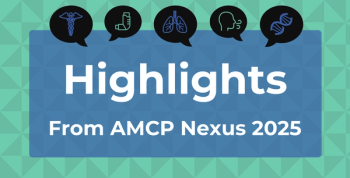
Novel Therapy for Multiple Myeloma: Future Directions in Care
Looking toward the future management of patients with multiple myeloma, Rafael Fonseca, MD, shares excitement for novel therapeutic strategies.
Episodes in this series

Transcript:
Rafael Fonseca, MD: We’ve been very fortunate to live through this year of progress and growth in multiple myeloma and witness how that has resulted in an improvement in overall survival for our patients. But we’re clearly not there yet. There’s a fraction of patients who, with the best treatments we have, are able to be cured from their disease. Of course, that’s a statement that can be made only in retrospect when we look back 10 or 15 years from now. But as I see those curves of patients who get frontline therapy and who become MRD [minimal residual disease]–negative, particularly at 10-6, and who are able to sustain that MRD-negativity, those curves look good.
We know myeloma can sometimes relapse many years later. I won’t pretend that it’s likely that all of them will stay there. But if a sizable fraction of patients are able to stay in the flat part of the curve, we’ll call that a success. But that’s insufficient as we see the development of new therapies. The excitement of CAR [chimeric antigen receptor] T cells and bispecifics is going to propel them quickly to frontline therapy, so there might be a future in which CAR T cells are explored in lymphoma and replaced as stem cell transplant for myeloma. Even more, there might be a future in which things like bispecifics are combined with simple agents up front and are able to achieve deep responses without many symptoms.
One such example is what we saw in a treatment for classic leukemia. This was published in the New England Journal of Medicine, and the use of daratumumab in combination with dasatinib was the subset of patients for whom this would have been a good molecular target. If I have the choice, I could envision treating a patient with t(11;14) myeloma whom could we treat with venetoclax plus 1 of the bispecific antibodies, and we could achieve a level of response that was reported in ALL [acute lymphocytic leukemia].
Other aspects of interest presented at ASH [American Society of Hematology Annual Meeting] include the number of trials that were reported for—let’s call it second generation or not reported—both CAR-T cells and bispecifics. We saw very interesting data with bispecifics. We saw the first report of cevostamab. We saw the first report of elranatamab as well too. Cevostamab targets FCRH5, and elranatamab targets BCMA. I’m just highlighting 2 of them. Several others show clear activity. It’s exciting to know that there are multiple compounds and multiple targets too. The same is true for CAR-T cells. Most CAR-T cells have been developed against BCMA, but the first 1 came from the group from Memorial Sloan [Kettering Cancer Center] that looked at GPRC5D with activity. We also saw activity from an AlloCAR T cell, which is a universal donor compatible with anyone. You give it and get CAR T-cell activity. That was remarkable as well. Those are things that caught my eye.
Some data came out regarding venetoclax. We know that venetoclax works very well for the subset of patients who have a slight lymph node variant myeloma—I call it a younger version of myeloma. It’s highly enriched for those who have the translocation t(11;14), but it could be also expressors of BCL2. Sometimes they express B-cell markers on the surface. We saw an update on the treatment of that in combination with daratumumab, which is a remarkable combination.
Lastly, 1 molecule that caught people’s attention was in a report of a clinical trial with an amino cytokine. This is a targeted delivery of interferon. Interferon is a drug we’ve used for many years with myeloma. It was abandoned mostly because of its systemic toxicity. Someone figured out, what if we deliver interferon A to B directly into the plasma cells through a payload?... We’ll see more of that. The more subsets and mechanisms of action we have for the drugs in our toolkit, the better for patients.
Transcript edited for clarity.
Newsletter
Stay ahead of policy, cost, and value—subscribe to AJMC for expert insights at the intersection of clinical care and health economics.










